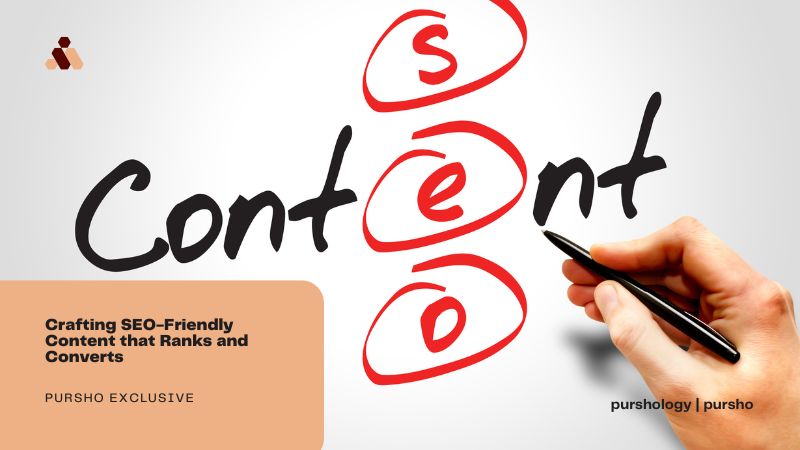In the vast digital landscape where competition is fierce and attention spans are fleeting, mastering the art of crafting SEO-friendly content is essential for businesses aiming to thrive online. Effective content not only ranks high on search engine results pages (SERPs) but also converts visitors into customers. In this article, we delve into the strategies and techniques that can help you create compelling content that not only boosts your SEO efforts but also drives conversions.
Understanding the Role of SEO in Content Creation
SEO, or Search Engine Optimization, is the practice of optimizing your content and website to improve its visibility and ranking on search engine results pages. It involves various tactics, including keyword research, on-page optimization, and link building, all aimed at making your content more discoverable to users searching for relevant information.
When crafting SEO-friendly content, it’s crucial to keep the needs and preferences of your target audience in mind. What are they searching for? What questions do they have? By understanding their intent, you can create content that not only attracts traffic but also resonates with your audience, ultimately leading to higher engagement and conversions.
Keyword Research: The Foundation of SEO-Friendly Content
Keywords are the building blocks of SEO. They are the terms and phrases that users type into search engines when looking for information. Conducting thorough keyword research is the first step in creating content that ranks well.
Start by identifying relevant keywords and phrases related to your industry, products, or services. Use tools like Google Keyword Planner, SEMrush, or Ahrefs to uncover search volume, competition, and potential opportunities. Look for long-tail keywords, which are longer and more specific phrases that often have less competition but higher conversion rates.
Once you have a list of target keywords, strategically incorporate them into your content. But remember, keyword stuffing—overloading your content with keywords in an unnatural way—can do more harm than good. Focus on creating valuable, informative content that naturally incorporates your target keywords.
On-Page Optimization: Maximizing Visibility and Readability
On-page optimization involves optimizing individual web pages to rank higher and earn more relevant traffic. It includes elements such as title tags, meta descriptions, headings, and URL structure—all of which play a crucial role in both SEO and user experience.
Ensure that your target keyword appears in your page title, meta description, and headings, as these are key areas that search engines consider when determining relevance. Keep your titles and meta descriptions concise, compelling, and relevant to the content of your page to entice users to click through to your site.
Additionally, pay attention to the readability of your content. Break up long paragraphs into shorter, digestible chunks, use bullet points and numbered lists to organize information, and incorporate multimedia elements like images and videos to enhance engagement.
High-Quality Content: The Key to Conversions
While optimizing for SEO is important, it’s equally crucial to prioritize the quality and relevance of your content. High-quality content not only ranks better in search engines but also keeps visitors engaged and encourages them to take action.
Focus on creating content that provides value to your audience. Whether it’s informative blog posts, comprehensive guides, or engaging videos, aim to address your audience’s needs, answer their questions, and solve their problems. By establishing your expertise and authority in your niche, you’ll build trust with your audience and increase the likelihood of conversion.
Incorporating Your Anchor Text: Enhancing SEO Value
One effective strategy for optimizing your content is to incorporate anchor text strategically. Anchor text is the clickable text in a hyperlink that provides context about the linked page. By using your target keywords as anchor text, you can signal to search engines the relevance and importance of the linked page for those specific keywords.
For example, if your target keyword is “SEO,” you might include anchor text like “learn more about SEO” or “SEO strategies” within your content, linking to relevant pages on your website or authoritative external sources. However, avoid using the same anchor text repeatedly, as this can appear manipulative to search engines.
Conclusion
Crafting SEO-friendly content that ranks well and converts visitors into customers requires a strategic approach that balances optimization techniques with high-quality, valuable content. By understanding the fundamentals of SEO, conducting thorough keyword research, optimizing on-page elements, and prioritizing content quality, you can create compelling content that not only attracts traffic but also drives meaningful engagement and conversions. So, whether you’re writing blog posts, creating videos, or designing landing pages, keep these principles in mind to maximize the effectiveness of your content marketing efforts.




